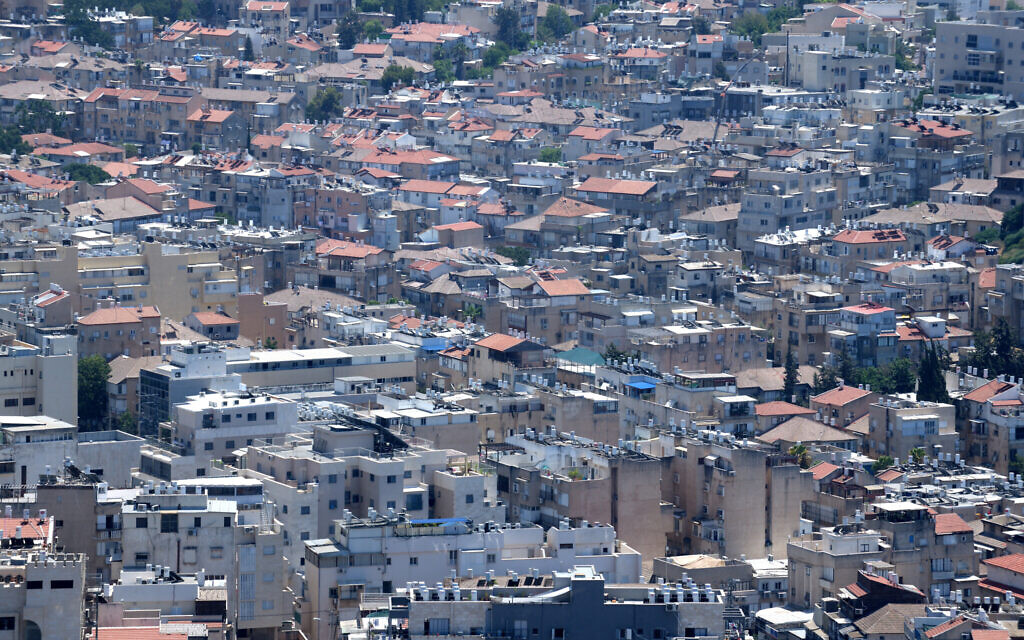A small but important shift in planning guidance could spell major changes for the residential development landscape in Israel in the years to come.
The National Planning and Building Council, made up of representatives from a range of government ministries and responsible for the national development outline plan (Tama 35), recently approved an amendment focused on increasing density within existing city boundaries, according to Globes. The alternative, allowing cities to sprawl outside of the urban environment, is seen as jeopardizing natural areas and agricultural land.
In Israel in particular, urban development up until now has sought to preserve connections between the built environment and open space both inside and outside of cities.
Tel Aviv has already made its intentions clear, with a city masterplan that aims to grow the city upwards, increasing the number of homes available within the city boundaries.
In the deal currently reaching a conclusion to privatize one of Haifa’s ports, provision for dense residential development is a key element. And in Jerusalem, Mayor Moshe Lion has set out a vision of developing the light rail and densifying building at the fringes of the city around more outlying stations on the network. The aim is to preserve the character of Jerusalem while simultaneously tackling a major housing shortage.
According to 2020 international data, the city with the highest population density per square kilometer is Manila in the Philippines, but at number nine is Bnei Brak with 27,338 people per square kilometer. Israel as a whole ranks about 30th most densely populated country in the world.
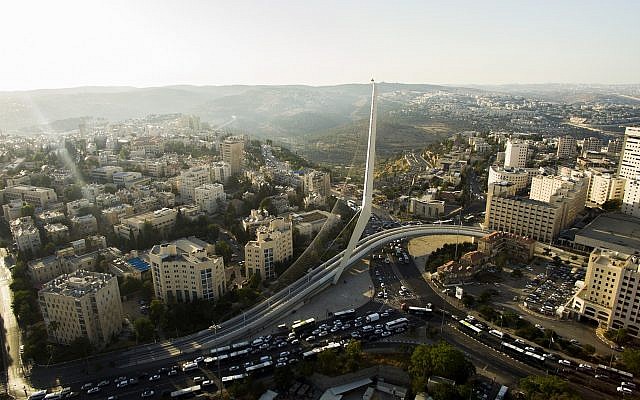
An aerial view of the Chords Bridge at the entrance to the city of Jerusalem. July 10, 2017. (Gidi Avinary/FLASH90)
Tama 35 represents an integrated development masterplan for the whole of Israel covering construction, development and conservation. It was improved in 2005 and was intended to guide the country through 2020. But, as ever with building development, plans have taken longer to come to fruition than was originally intended, and the guiding framework of Tama 35 remains relevant today. It proposes “concentrated dispersion” aimed at preventing urban sprawl into open spaces and encouraging the development of existing urban areas. It also sets different guidance for different parts of the country and delineates four key metropolitan areas — Haifa, Tel Aviv, Jerusalem, and Beersheba.
The risk with densification is that cities look to the easy solution of building residential towers that can often be inharmonious with the existing city environment. Or, they omit green spaces in favor of residential development.
The amendment now brought forward seeks to avoid those missteps, while promoting an increased number of housing units per dunam (one-quarter acre or 1,000 square meters) — up to 30 in cities of more than 500,000 people.
This can be achieved in part by reducing the parking land allocated to buildings, or car lots can be taken underground. But particularly in Tel Aviv, and to a lesser extent in Jerusalem, development is being focused around public transportation. Provision for cars is being excluded entirely from new buildings.
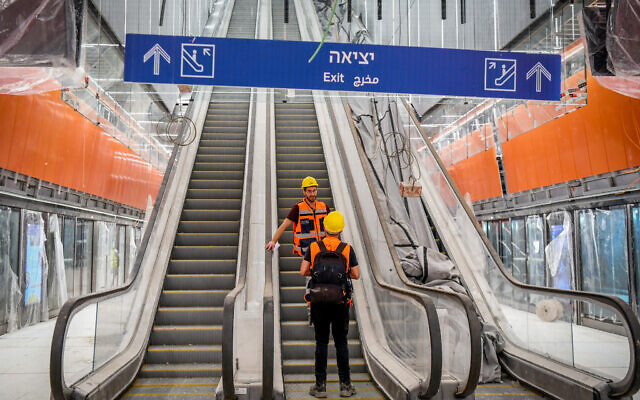
Construction at the Allenby underground station of the light rail, part of the red line in Tel Aviv, July 14, 2021. (Yossi Zeliger/Flash90)
Planning researchers say urban sprawl is no longer an appropriate or sustainable growth solution, and adversely affects “people’s quality of life and health, and contribut[es] to… social problems.” Urban sprawl “reflects an inappropriate and unsustainable way of using the environment and its resources,” wrote researchers Janusz Pelczynski and Bartlomiej Tomkowicz in a 2019 paper.
Of the densification suggestions they put forward, a number are already active policy in Israel, including building onto existing buildings (through the extremely popular TAMA 38 program that adds extra stories), demolishing buildings that are out of date or do not make good use of space and rebuilding more efficiently (effectively, the Pinui V’Binui scheme that allows older buildings to be evacuated, demolished and rebuilt), and adapting existing buildings for residential housing. The government has stated that it intends to convert office or commercial space into residential units, as part of its 2022-2025 housing plan.
Non-cohesive planning: A look at Netanya and Umm al-Fahm
The OECD, an economic organization with 38 member countries, has looked at the challenges of urban development in Israel. In a 2017 study, it stressed that for development to be effective, planning approval needed to speed up. But it also saw improvements in the decision-making processes and better patterns of cooperation between central and local governments. There was also recognition of the need for infrastructure development to accompany particularly large-scale and more peripheral housing developments — a need that has been recognized and provided for in part in recent weeks, in a deal between the Housing Ministry and municipalities across the country.
Focusing specifically on Netanya, the OECD was critical of the ways in which the city had evolved over the years. It notes that “the development of residential high-rise buildings in the city’s south has created a discontinuous urban fabric as plots of land between the historic core and the new neighborhoods remain undeveloped. Spatial segregation of socioeconomic groups is evident across Netanya, with separation being reinforced by uniform urban development within neighborhoods.”
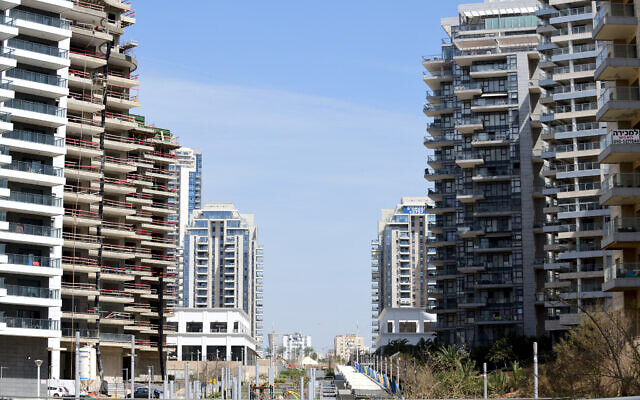
A construction site of new residential buildings in the Ir Yamim neighborhood in the costal city of Netanya, March 26,2020. (Gili Yaari / Flash90)
Each neighborhood has a very different price bracket for housing, creating separation between affluent and less wealthy parts of town. There are also major challenges to generating employment opportunities within the city to connect its disparate parts and to ensuring that private land (roughly 7% of the total) is also used for development.
In the northern Arab-majority town of Umm al-Fahm, the other location the OECD looked at, the issue was a lack of cohesive planning.
“About two-thirds of the land in Umm al-Fahm is either in private or shared ownership with some plots of land having multiple — often unknown — owners. Development on these plots has followed their owners’ needs and priorities rather than any coherent plan, resulting in a suboptimal urban fabric lacking public space and infrastructure,” the OECD report said.
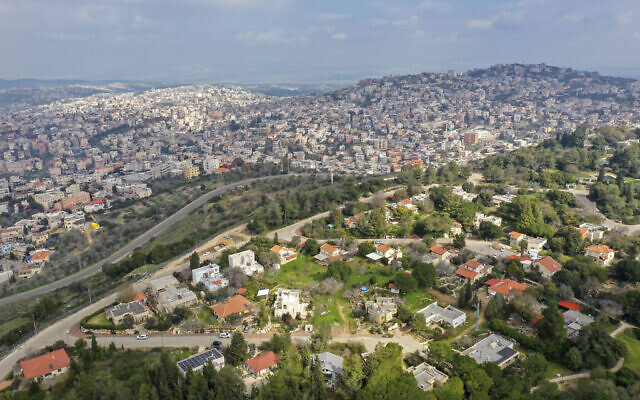
This Tuesday, Feb. 4, 2020, photo, shows the Arab town of Umm al-Fahm, far back, and the Israeli Moshav of Mei Ami (AP Photo/Oded Balilty)
While there has been some success in developing the housing market by building on a large scale on the (limited) public land available, the OECD noted a “cultural reluctance” to sell private land for development in the city. A high level of building without permits was holding back effective urban development in the area, it said.
As individual city plans and the OECD report highlight, cities across Israel have very different ideas about their future development, and while the relationship between city and surrounding landscape is important, there is also short supply and strong demand for housing that they somehow need to meet.
